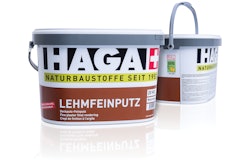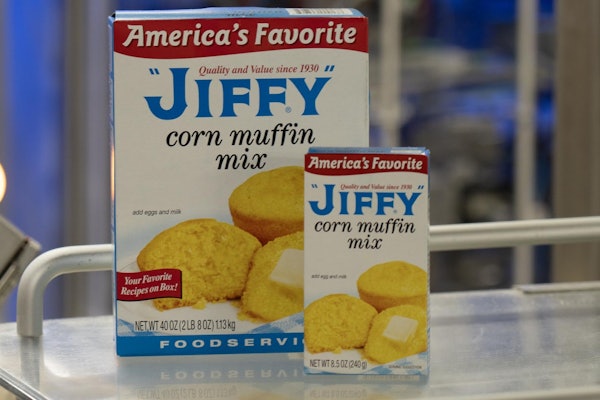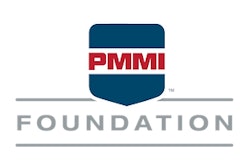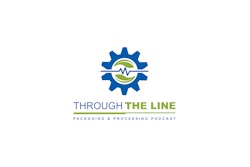Extended Producer Responsibility (EPR) is premised on the concept that those who produce waste should be responsible for defraying the costs of managing that waste at its end of life. EPR fees and programs have been assigned to several products in the U.S.—among them batteries, carpet, light bulbs, and mattresses. Calls to expand EPR to packaging have existed for the past decade, and in more recent years, there has been an increase in proposed legislation to implement such. Early 2021 has brought forth nearly a dozen proposals in at least seven states related to packaging producer responsibility, as well as anticipation of a federal bill to be re-introduced this year with similar language.
Given that at least one state this year is likely to enact fees on packaging to improve recycling, it’s worthwhile to explore some of the approaches being taken among the various bills and highlight some of their differences and similarities. There are many different stakeholders within the packaging industry working on proposals, and many share basic principles and objectives. Collaborative efforts are ongoing among these stakeholders to ensure we speak in a unified voice to advance proposals we believe will work best for the entire packaging value chain.
How EPR is defined will have a significant impact on who is required to pay, and in some cases, packaging design is considered. Most of the proposals cover more than just packaging, including some combination of foodservice containers, single-use bags, and/or printed material. Some go further, adding in beverage containers and shipping and moving containers, for example. Almost all are focused on consumer-facing primary, secondary, and tertiary packaging, and this is an important distinction. There are strong arguments as to why packaging used within business-to-business transactions should be out of scope, since this is generally not consumer facing and since recycling and recovery systems for such should already exist. Policy arguments will be made to exempt some packaging and products (i.e., beverage containers already covered under a state deposit program, reusable containers and packaging, medical devices and products, hazardous materials, etc.), and those will have to be considered as they are raised.
In terms of who would be responsible for financing the recovery and recycling of covered products and packaging, most of the proposals place primary responsibility on consumer brand companies, followed by distributors, and then retailers and/or importers. Packaging manufacturers would generally not be considered responsible given they may have no idea where their products ultimately end up after potentially traveling through interstate commerce channels. However, it’s likely that costs will trickle down, and the majority of the packaging supply chain will at least indirectly see some additional costs.
See: Recycled Content Mandates: Pros and Cons
One distribution channel AMERIPEN is investigating further to understand potential policy implications is e-commerce, as policymakers want to—and for the sake of equity should—ensure related packaging is captured in any laws that advance. But it’s less clear how to determine exactly who the responsible party might be, since packaged products and their secondary and tertiary packaging often come into play at different times, and even in different states, as they move separately and then together through e-commerce distribution channels.
The various related proposals put forth by states are very inconsistent. Some require meeting certain recycling, recyclable, reusable, and/or compostable rates by certain dates, while others require meeting recycled content rates by a certain date or do not state any goals. Only some require curbside and/or multi-family recycling access, while nearly every proposal requires some level of consumer education and litter abatement support.
The goals set will inform packaging system objectives, including where funding is focused as well as where design is emphasized. Given that packaging is typically designed for national or international needs, extreme variability in goals will further complicate objectives to achieve success. This is one reason AMERIPEN is advocating at the state level for the ability to form a national organization to help set goals and objectives informed by local needs but harmonized across regions and states. We continue to promote the idea that further stakeholder engagement and collaboration are clearly merited on policy for all potential goals and requirements. This is true for existing and proposed state or other definitions that might be utilized and what is feasible from industry and market perspectives. It also applies to identifying what is best determined and set by statute or regulatory authority versus being done by the responsible parties who can demonstrate and justify positive environmental improvements that are also technologically and commercially feasible.
Organization and decision making
How producer fees are collected, disbursed, and overseen are key aspects of any EPR program. Many in the packaging strongly believe that if they’re expected to pay for packaging recovery, then they should have control over how those investment dollars are spent. Others feel we need the perspective of the full value chain to inform where the greatest needs and opportunities for system change exist. A producer responsibility organization (PRO), also sometimes referred to as a product stewardship organization (PRO) or stewardship responsibility organization (SRO), would be the entity formed by responsible parties and required under statute to operate the stewardship program, assess and collect payments from responsible parties, and support recycling and recovery activities as well as investment.
See: The Recycling Leadership Council Releases Report on Fixing Recycling in the U.S.
There is general agreement across the various state proposals that the PRO will be controlled by brand owners as the responsible parties paying the producer responsibility fees, but brand owners are not given full decision-making authority under all the proposals. Some of the proposals would grant some level of decision-making authority to an authorized state agency rather than the brand owners, while others would require the brand owners to take binding and/or non-binding input from a statutory advisory or planning committee or council made up of other stakeholders (e.g., packaging manufacturers, collectors, recyclers, processors, retailers, municipalities, NGOs, consumers, etc.). This is clearly an area from a policy perspective that will require more collaboration to determine acceptable and appropriate levels of engagement by all stakeholders in what should be an industry-run organization with adequate and necessary input from others across the entire packaging value chain.
Fund collection
While there is general agreement among the state proposals that brands would be the primary party paying the fees for a packaging producer responsibility program, how those fees would be set is much more variable between the proposals. Most of the state proposals under consideration would grant authority to the PRO to set producer responsibility fee methods and rates, while at least two proposals would cede this authority to a state agency. Producer responsibility fees would be paid by responsible parties directly to the PRO and held in a stewardship fund, and most of the proposals would grant an exemption from fees for small producers as defined (e.g., less than less than $1 million in gross revenue in the state per year).
See: Roadmap Aims to Address Systemic Issues in the U.S. Recycling System
All the state proposals require or encourage PROs to implement fee incentives or disincentives for factors that may favorably or negatively impact the recycling and recovery of covered products and packaging, such as environmentally friendly packaging designs, use of recycled content, source reduction, reuse, greenhouse gas emissions, toxicity, or waste reduction. Some will argue that this fee adjustment approach, commonly known as eco-modulation, is not fully developed within existing packaging producer responsibility systems outside the U.S. and merits further stakeholder engagement and collaboration to determine if it’s a viable policy driver here in the U.S.
Lastly, few proposals to date have specified exactly how fees would be collected. It remains to be determined if fees on producers might be based on in-state revenue, a per-item or package fee, or some calculated formula based on SKU design, weight, or other factors. In most cases, the final decision here would be left to the PRO—a system we believe reinforces the value of ensuring fees reflect industry needs.
Fund disbursement
The intent of a packaging producer responsibility program would be to help defray the costs of packaging recycling and recovery, but there are significant differences among the state proposals for exactly what the PRO versus others (i.e., municipal government, taxpayers, etc.) would be responsible for funding. Most of the proposals generally would require the PRO to reimburse municipalities for some level of operational collection, transportation, and processing of covered products and packaging. Some go further and require paying for contamination reduction and recycling system upgrades; some go even further and require reimbursement for municipal landfilling. AMERIPEN believes that setting goals for packaging producer responsibility that result in sustainable outcomes is a necessary objective. If increased recovery were a goal, then paying for the landfilling of packaging would be contradictory to that goal.
Recycling and solid waste management can admittedly be very complicated within any given state, including whether services are paid for by a municipality (even if contracted to a third party) or paid for by residents under some type of subscription service. There is keen interest among packaging industry stakeholders to understand these dynamics more clearly and determine where industry funding might best be leveraged to drive innovation and truly improve packaging recycling and recovery. So in addition to potentially reimbursing municipal and regional recycling, composting, or reuse of covered products to meet the overall goals of the stewardship plan based on identified statewide needs, the SRO could also separately disburse controlled funds, based on best practices and reporting, to municipalities and private and regional waste management entities for recycling and composting improvements, including for such initiatives as end-market development programs and infrastructure; recycling sorting and processing technology; advanced recycling; new or expanded composting facilities; and consumer education related to market development and contamination reduction. This is an approach AMERIPEN has strongly promoted, and further stakeholder collaboration on this is merited to ensure that proposed and enacted policy does not potentially hamper these types of innovative solutions.
See: Five U.S. Packaging Bills Under Consideration
AMERIPEN hopes packaging producer responsibility statutes will require a PRO to conduct a recycling needs assessment, with support from the state, municipalities, and solid waste organizations, to evaluate capacity, costs, gaps, and needs for various factors, including current funding needs impacting recycling access and availability; collection and hauling of recyclable materials; processing capacity and end-market conditions and opportunities for recyclable and/or compostable materials; and consumer education. This would be a critical policy component to ensure needs are understood before recycling and recovery best practices standards and PRO plans are established and implemented, and policymakers have signaled a willingness to consider such as proposals advance.
As noted earlier, the number of legislative proposals related to packaging producer responsibility has increased significantly over the past year, and even more stakeholder engagement and collaboration is therefore needed to clearly define the system details that will reinforce goals and desired outcomes—both for today and tomorrow. A shared dialog and responsibility among all the different stakeholders within the system will be critical to ensure that any EPR funding and disbursement represents an equitable solution that offers innovation and value to all and ideally does not seek to exclude packaging
AMERIPEN represents the U.S. packaging value chain by providing policymakers with fact-based, material-neutral, scientific information.

























